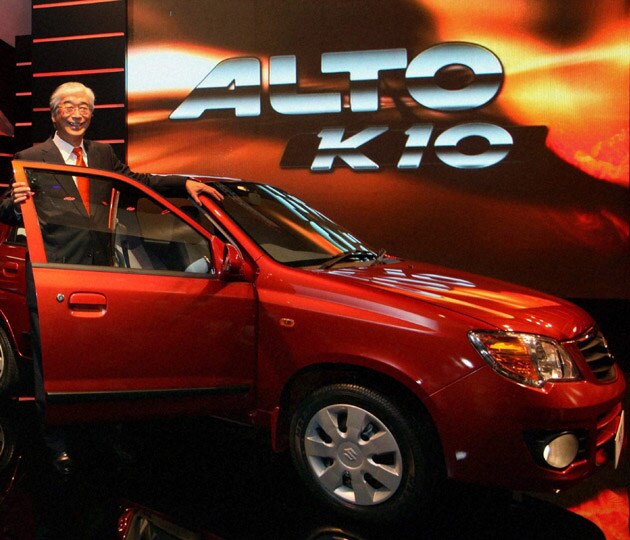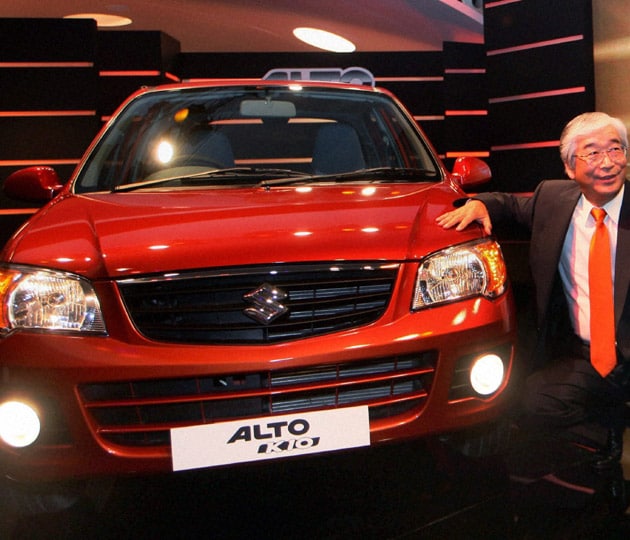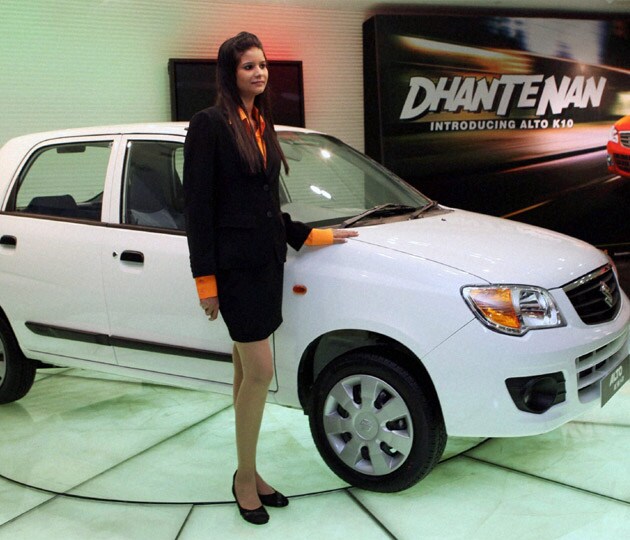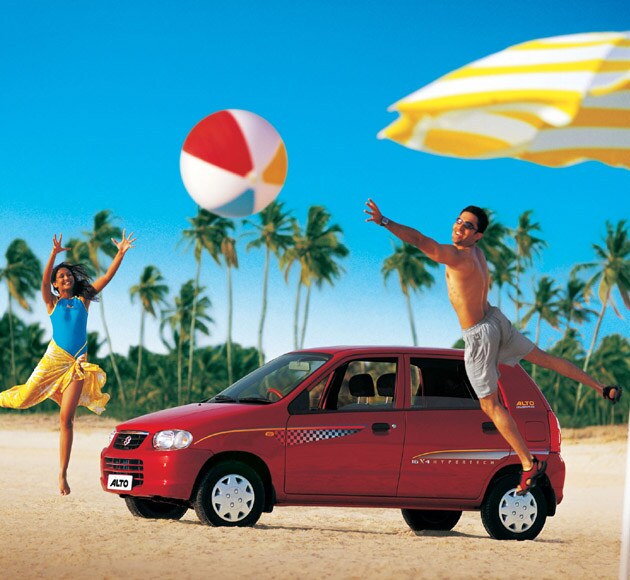The all-new Maruti Alto K10
Maruti Suzuki launched a new version of its best selling model Alto, called Alto K10, at an introductory price between Rs 3.03 lakh and Rs 3.16 lakh, ex-showroom Delhi. Alto K10 comes with two variants, Alto-K10 LXi at Rs 3.03 lakh and Alto-K10 VXi at Rs 3.16 lakh. Alto K10 is powered by a one-litre K-series engine which is used in its A-Star and Estilo models.
-
The country's largest car maker Maruti Suzuki India has launched a new version of its best selling model Alto, called Alto K10, at introductory prices of Rs 3.03 lakh and Rs 3.16 lakh (ex-showroom Delhi).
With the launch of the Alto-K10, MSI is looking at strengthening its hold in the Indian compact car segment that comprises over 70 per cent of the market. -
Alto K10 comes with two variants, Alto-K10 LXi priced at Rs 3.03 lakh and Alto-K10 VXi priced at Rs 3.16 lakh. Alto-K10, powered by one litre engine from the company's latest generation K-series engines, will take on the likes of General Motors' Spark and Hyundai Motor India's Santro.
-
The launch of the new version comes at a time when MSI has seen its market share dip to 47 per cent, from over 55 per cent, in the quarter ended June 30. Maruti claims that Alto K10 will provide a mileage of 20.2 km per litre. The company said that it has spent Rs 70 crore for developing the new Alto.
"I am confident of maintaining a market share of 50 per cent," Maruti Suzuki India Managing Director and CEO Shinzo Nakanishi said. -
The Alto-K10 comes with improved suspension and more knee-room for rear seat passengers. Alto K10 is longer by 125mm than the existing Alto to accommodate the bigger K-series engine. "The Alto's package of performance, fuel efficiency and attractive cost of ownership have together made it India's most popular car. The Alto-K10 will take this forward," the company says.
-
Since its launch in September 2000 Maruti has sold over 14.13 lakh units of Alto so far. Nearly a quarter of Maruti's current Alto sales come from top 10 cities. With the new Alto, Maruti expects to bridge the Rs 3 lakh price gap in its portfolio and also improve its market share in urban areas.







